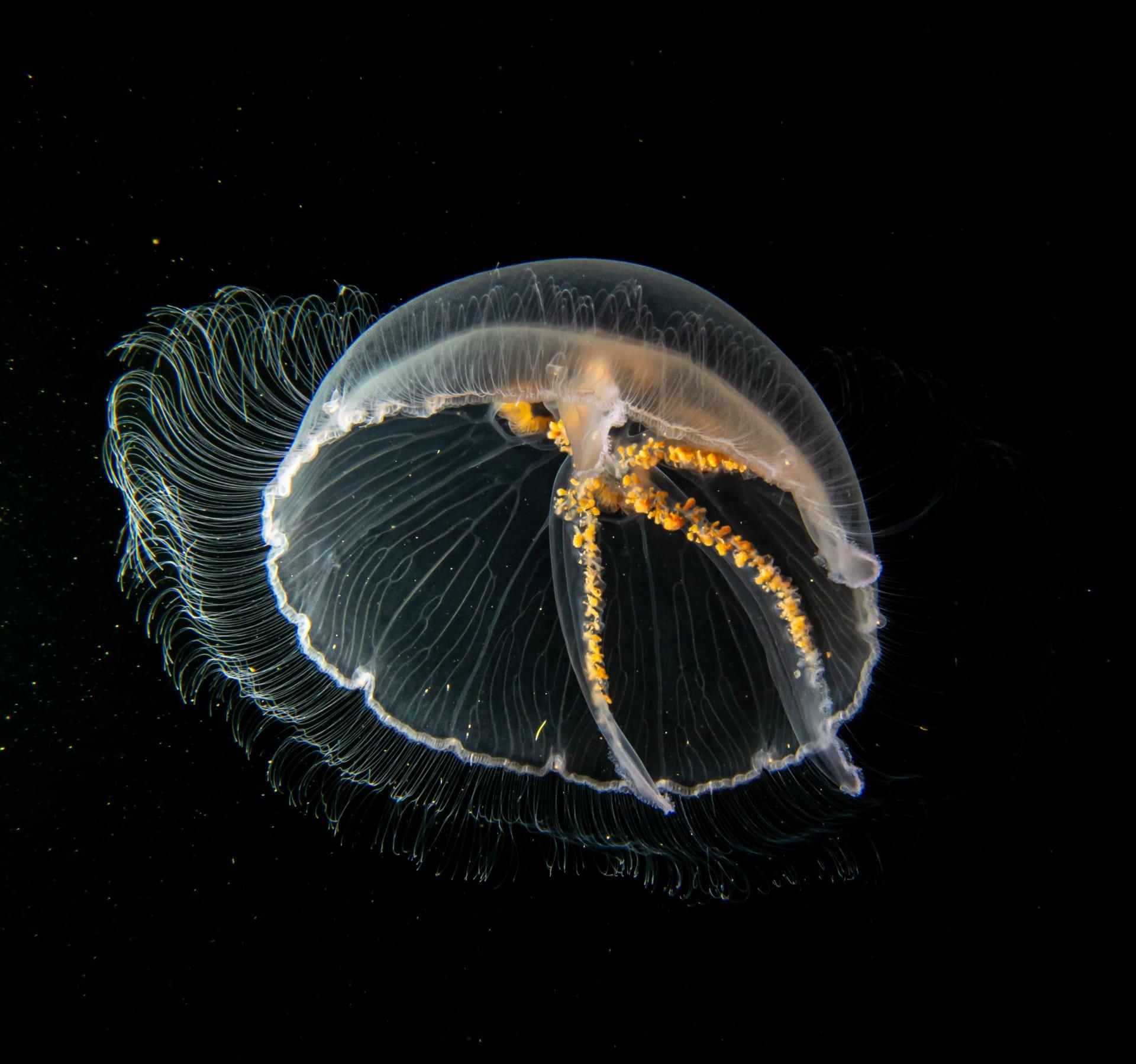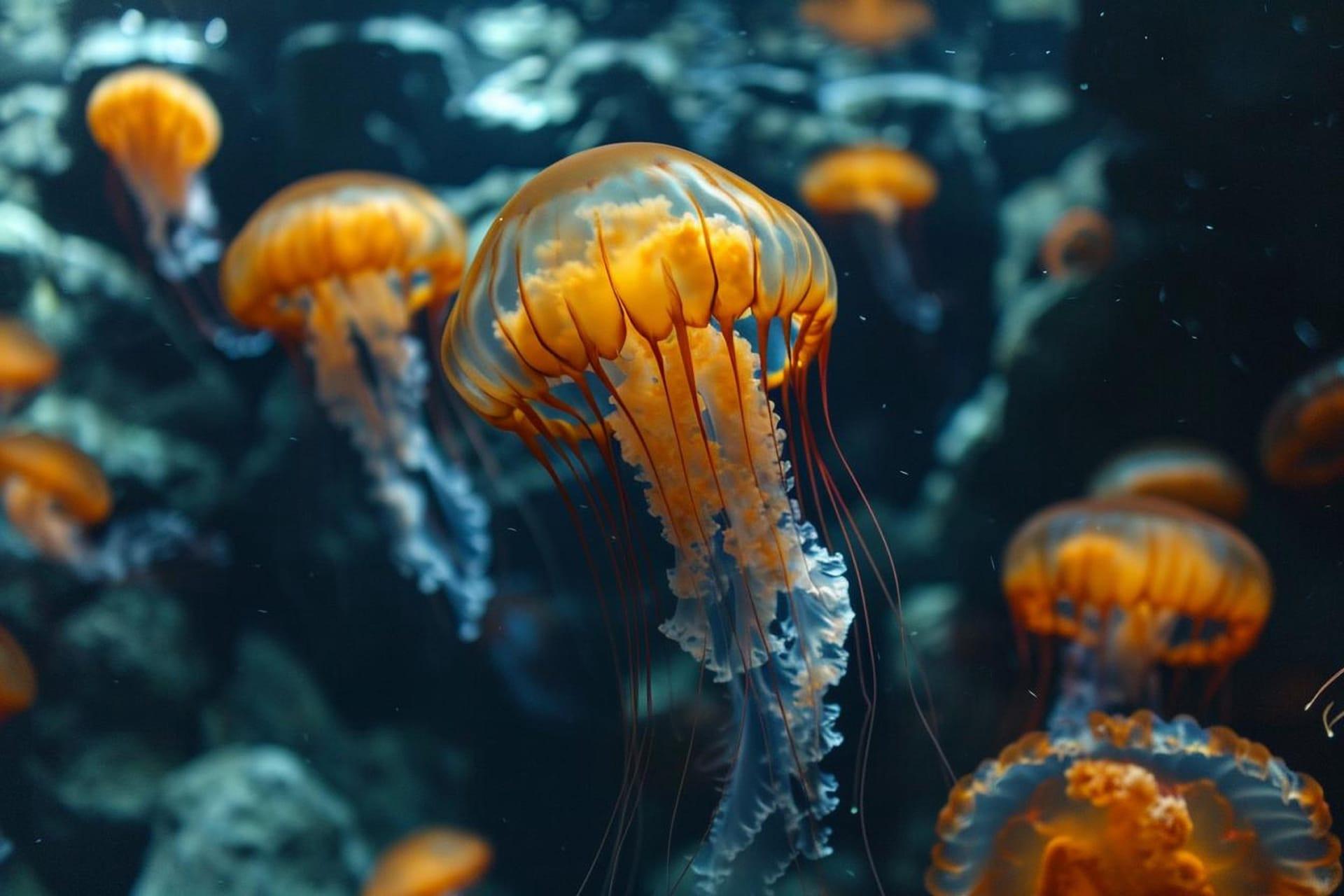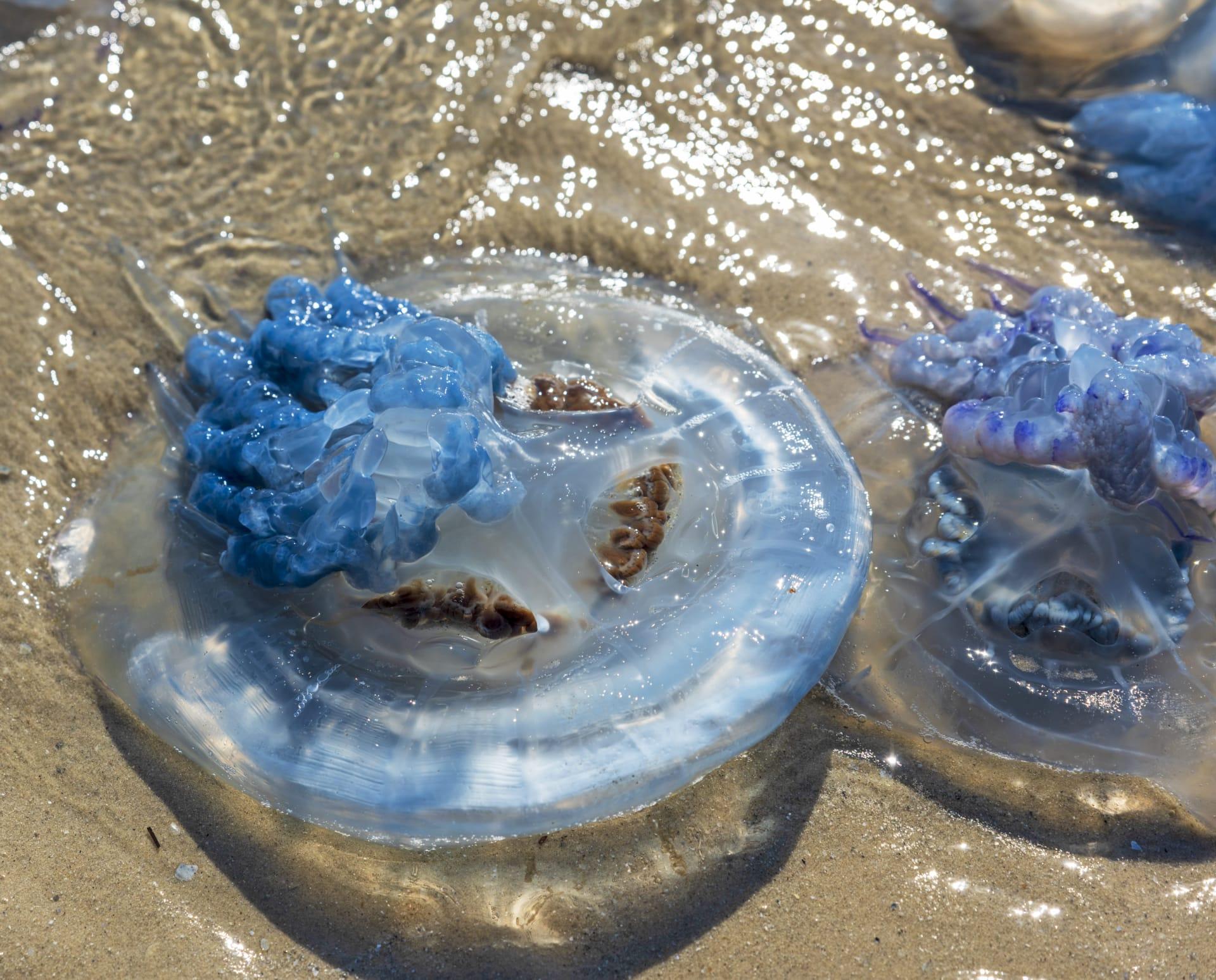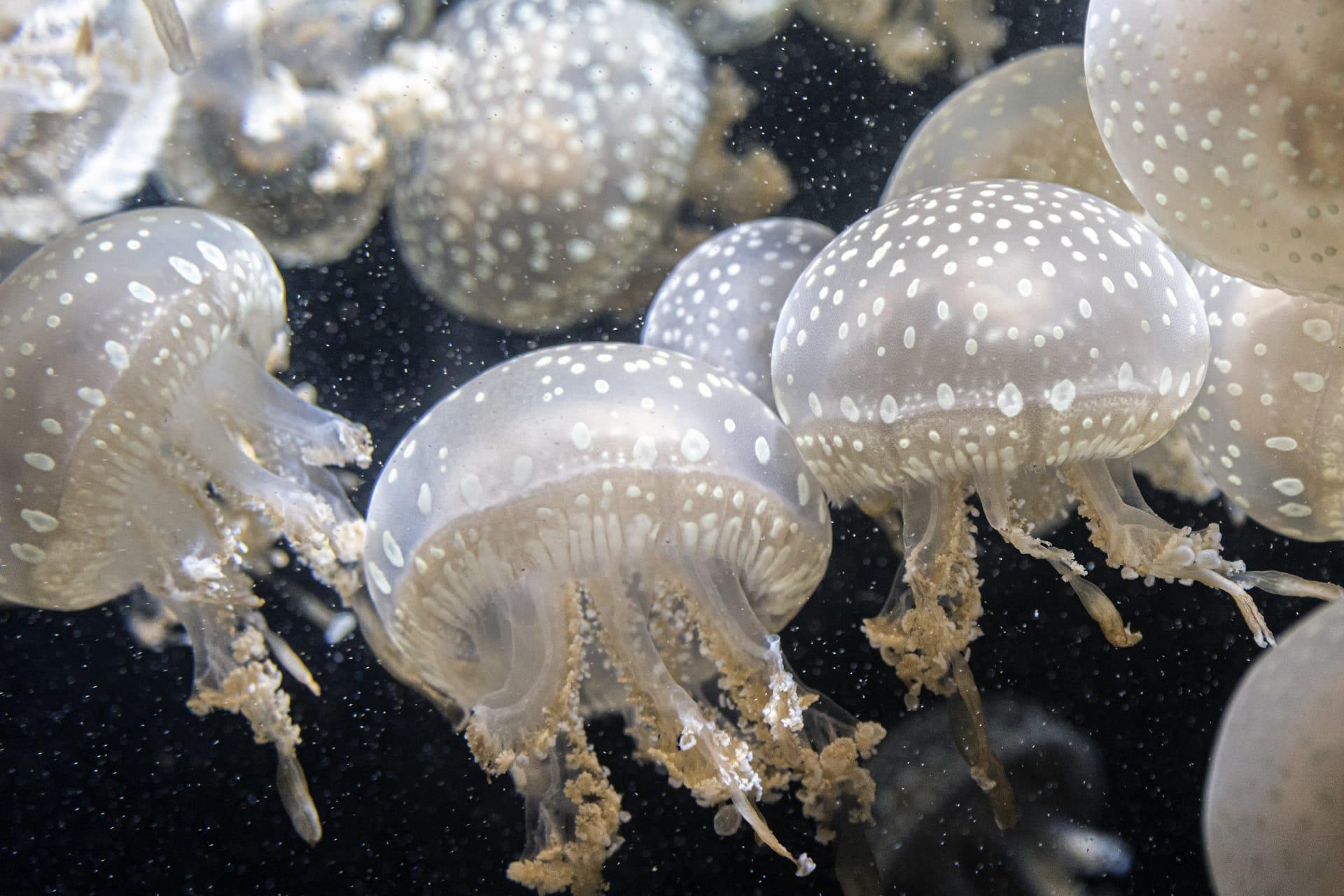Jellyfish
- Home /
- Mini Encyclopedia /
- Animal /
- Jellyfish
1
Jellyfish, ethereal sea creatures that seem to float effortlessly in the ocean, belong to the phylum Cnidaria, a group known for their distinctive jelly-like bodies and tentacles adorned with cnidocytes - cells responsible for their sting. This phylum includes over 200 species, categorized mainly into classes like Scyphozoa (true jellyfish), Hydrozoa (which includes the Portuguese man o' war, technically not a true jellyfish but often grouped with them), Cubozoa (box jellyfish, known for their potent venom), and Staurozoa (stalked jellyfish). Each species exhibits unique characteristics in size, color, and tentacle structure, with some like the Lion's Mane Jellyfish (Cyanea capillata) reaching diameters up to 7 feet and tentacles over 100 feet long.
Jellyfish thrive in every ocean of the world, from the surface to the deep sea. Their distribution is vast, with some species preferring the warm waters of the equatorial regions, while others are found in the cold depths of the Arctic and Antarctic oceans. Seasonal blooms are common, where large populations can appear suddenly, often influenced by ocean currents, temperature, and the availability of plankton, their primary food source. Coastal regions around the world, including the Pacific Ocean's coasts of Australia and Japan, the Atlantic coasts of North America and Europe, and the Mediterranean Sea, are notable for their significant jellyfish populations, affecting local marine ecosystems and human activities.

2
Question: Are all jellyfish dangerous to humans?
Answer: While it's a common belief that all jellyfish are dangerous, the truth is more nuanced. Indeed, some species, like the box jellyfish (Chironex fleckeri), possess venom potent enough to cause serious harm or even death to humans. However, the vast majority of jellyfish species have stings that are either harmless or cause only mild irritation to humans. Factors such as the size of the jellyfish, the type of cnidocytes it possesses, and an individual's reaction to the venom play a crucial role in the severity of a sting. It's also worth noting that some jellyfish species, like the moon jellyfish (Aurelia aurita), are considered virtually harmless, with stings that might not even be felt by humans.

3
Jellyfish have evolved remarkable survival strategies to thrive in the ocean's diverse environments. One such strategy is their ability to drift with ocean currents, conserving energy while traveling vast distances to find food and breeding grounds. Their semi-transparent bodies provide camouflage, protecting them from predators. Additionally, jellyfish can contract their bell-shaped bodies to propel themselves forward, allowing them to navigate somewhat independently of the currents.
Another key survival tactic is their reproductive strategy. Many jellyfish go through a complex life cycle that includes both sexual and asexual phases, increasing their chances of proliferation. The polyp stage, which can clone itself, creates multiple offspring, contributing to the rapid population blooms. Some species, like the immortal jellyfish (Turritopsis dohrnii), can even revert to their polyp stage after reaching maturity, effectively bypassing death and giving them a form of biological immortality.

4
In marine ecosystems, jellyfish play multifaceted roles, acting as both predators and prey. They contribute to the ocean's food web by feeding on small plankton, fish eggs, and sometimes other jellyfish, helping to maintain the balance of marine life. This predatory behavior can influence plankton populations and indirectly affect the distribution and abundance of other marine species.
Jellyfish also serve as a crucial food source for a variety of marine animals, including larger fish, sea turtles, and certain bird species. Their presence in large numbers can significantly impact local fisheries and marine biodiversity. Moreover, jellyfish blooms can indicate changes in ocean health, serving as bioindicators for scientists studying the effects of climate change, overfishing, and pollution on marine ecosystems.

5
Film: "Jellyfish: The Beautiful Invaders" is a documentary produced in the United States in 2018. It explores the stunning world of jellyfish, delving into their biology, lifecycle, and the growing phenomenon of jellyfish blooms around the globe. The film showcases breathtaking underwater footage, highlighting the beauty and complexity of these creatures and their adaptability to changing ocean conditions.
Book: "Jellyfish: A Natural History" by Lisa-ann Gershwin, published in the United States in 2016, provides a comprehensive overview of jellyfish species across the world. Gershwin, a renowned marine biologist, combines scientific research with captivating photographs, offering insights into the fascinating lives of jellyfish, their evolutionary history, and their role in marine ecosystems.
Book: "Stung!: On Jellyfish Blooms and the Future of the Ocean" by Lisa-ann Gershwin, published in 2013, delves into the causes and consequences of increasing jellyfish blooms in our oceans. Gershwin explores the impact of human activities on marine life and the potential future of oceans dominated by jellyfish, presenting a compelling argument for the need to address environmental challenges.